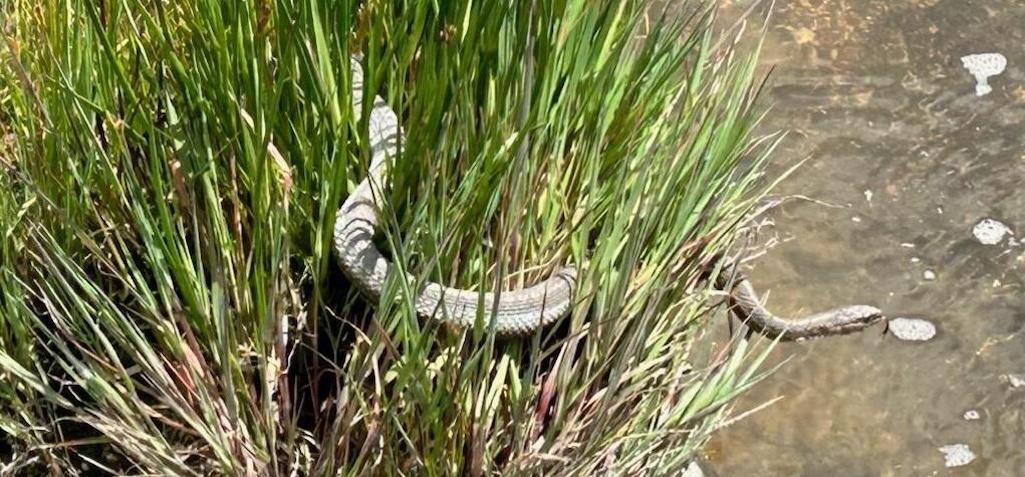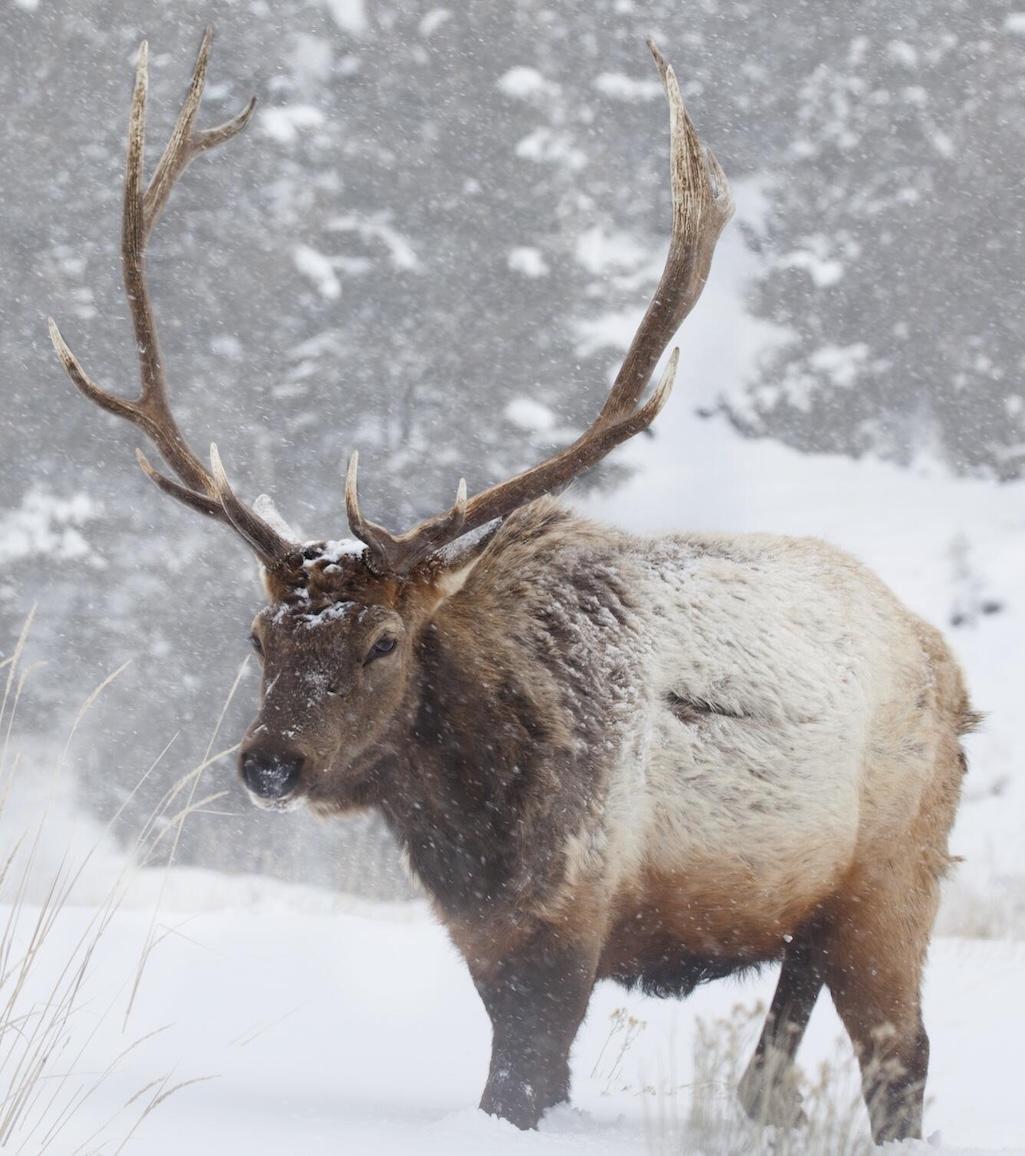Editor's note: Yellowstone Caldera Chronicles is a weekly column written by scientists and collaborators of the Yellowstone Volcano Observatory. This week's contribution is from Stanley Mordensky, geologist with the U.S. Geological Survey.
Yellowstone National Park is famous for its wildlife and geothermal activity. When we explore the intersection of these two natural grandeurs, we find an ecosystem unlike anywhere else on Earth.
When considering life in Yellowstone’s thermal basins, extremophiles—organisms that thrive in, if not require, extreme temperature or acidic conditions—come immediately to mind. Some of these extremophiles vibrantly display colorful bacterial mats characteristic of some thermal features (like the extremophilic bacteria of Grand Prismatic). Other, lower-key extremophile species include the esoterically famous Thermus aquaticus, the first organism recorded to survive temperatures > 80 °C (176 °F) by producing heat-resistant proteins that allow cellular function at high temperatures. After its discovery, one of these heat-resistant proteins became the irreplaceable component of the genetic sequencing method known as polymerase chain reaction (PCR) analysis, which requires cycling DNA between ambient conditions to > 90 °C (194 °F—temperatures that would otherwise damage the DNA without the inclusion of this protein).

View of the vibrant, multicolored extremophilic bacteria in the outflow from Grand Prismatic Spring at the Midway Geyser Basin, Yellowstone National Park/Elizabeth Mordensky, May 12, 2024.
Perhaps less recognized are other forms of life that have adapted to call the thermal basins home. A small fly known as an ephydrid remains active year-round due to the heat provided at thermal features. The larval stage of the ephydrid consumes bacteria and other microorganisms in the hydrothermal features. Adult ephydrids can survive direct exposure to 43 °C (109 °F) fluids but can withstand even higher temperatures by using air bubbles as additional insulation. The ephydrids serve as a food source for other organisms, like spiders that run quickly across the surfaces of the hot water to avoid being burnt and a species of tiger beetle, the wetsalts tiger beetle (Cicindelidia haemorrhagica), with a ventral abdomen that reflects infrared radiation.
Larger organisms, too, rely on the geothermal features of Yellowstone. For example, garter snakes (Thamnophis elegans) require temperatures > 32 °C (90 °F) for digestion of their food. In the interior of Yellowstone National Park, these conditions can be difficult to find, even in summer, but garter snakes have been observed thermoregulating in thermal waters when air temperatures are near freezing.

A garter snake along Violet Creek near the Mary Mountain Trail in Hayden Valley, Yellowstone National Park. This snake used the geothermally warmed creek to thermoregulate during near-freezing overnight conditions/USGS, Stanley Mordensky, June 2023.
Some plant species survive simply by resilience. Lodgepole pines are ubiquitous throughout western North America, but thrive in the slightly acidic, nutrient poor soils of the Yellowstone Caldera, where other tree species are not as abundant; however, when the roots of the trees pull water from hydrothermal fluids, silica and minerals accumulate in the trees, turning the base of the trees white and eventually causing the death of the trees. The white bases, appearing to some as white socks, are termed bobby socks.

View of dead lodgepole pine trees with “bobby socks” from having taken up hydrothermal water that contains dissolved silica and other minerals. Photo taken south of the Fountain Paint Pot Trail in Lower Geyser Basin, Yellowstone National Park, looking toward the southeast/USGS, Stanley Mordensky, August 28, 2020.
Other plant species evolved to require the heat and moisture of geothermal activity to survive and are endemic to the park. Ross’s bentgrass (Agrostis rossiae), living in geothermally warmed cracks along hot spring walls and in geothermal depressions, is found only in geyser basins along the Firehole River and the Shoshone Geyser Basin. Rarer still is Yellowstone sulphur flower wild buckwheat (Eriogonum umbellatum), which requires thermally influenced areas that are neither too hot nor too cold and only grows on open, mostly barren ground along the Firehole River. Other plants, like the Yellowstone sand verbena (Abronia ammophila), may have used the heat from geothermal activity to survive long enough to evolve from other species in their genera that are only otherwise found in warmer, drier climates.
Megafauna have also adapted to the conditions of Yellowstone’s geothermal areas. While fit for the extreme cold, elk (Cervus canadensis) are not ideally suited to uncover food in deep snow; however, the thermal features along the Firehole River provide enough heat to expose vegetation for elk to graze there year-round. The elk in this part of Yellowstone National Park are the only elk herd to spend both summer and winter inside the park. The year-round availability of food, though, comes at a high cost. The hydrothermal fluids and gasses enrich this vegetation with higher concentrations of fluoride and silica than generally found elsewhere. Although some fluoride benefits mammalian teeth, too much fluoride can cause damage. Simultaneously, silica, being harder than tooth enamel, wears teeth down mechanically. Unhealthy teeth in ungulates, like elk, contribute to poor nutrition and shorter lifespans. Consequently, the elk along the Firehole River have lifespans of generally 13 to 15 years, roughly 5 years shorter than elk elsewhere in Yellowstone National Park.

Photo of a bull elk wintering in Yellowstone National Park./Elizabeth Mordensky, March 5, 2024.
The adaptability of a species often corresponds to its reproduction rate. In Yellowstone National Park, we observe this theory playout. Microorganisms, which reproduce quickly relative to megafauna, have already evolved to survive the extreme geochemistry and thermal conditions that would cook other organisms. Larger creatures, which do not reproduce as quickly as microorganisms, have not yet had enough generations to express new genetic traits, but we can still see behavioral modifications through soaking in thermal features to assist thermoregulation and relying on geothermal heat to keep food sources available, thereby avoiding an unnecessary migration. Where else in this world can you find these wonders and watch species as they adapt?




 Support Essential Coverage of Essential Places
Support Essential Coverage of Essential Places






